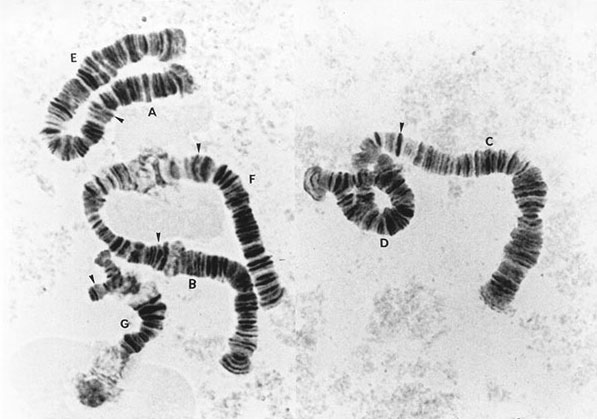C. oppositus f. whitei MD variants Photograph of the polytene chromosome complement of C. oppositus f. whitei showing the approximate locations of the various known MD sites (arrowheads). Arm A MD: Larvae of this form have some development of the lateral projections (20-160 µm). Arm CD MD: Probably the most widely distributed MD location, but very rarely able to be recognized except from egg mass data, and then often requires electrophoretic data. Cytologically tends to be polymorphic in all chromosome arms, mostly - A5; B1 and B2, C1 and C2; D1 and D2; E2; F1; G1, but some G3. Arm F MD: Cytologically may carry F1 and F3. There seem to be two variants for the other arms: A4, B2, C2, D1, E2, G1 (south west of Melbourne); or A5, B1, C1, D2, E2, G1 (south east of Melbourne). Arm G MD: This appears to be a relatively rare MD location, known only from a couple of localities south west of Melbourne, Victoria. |
Modified: 23 January 2024
Access: Unrestricted
Copyright © 2010-2024, Jon Martin.